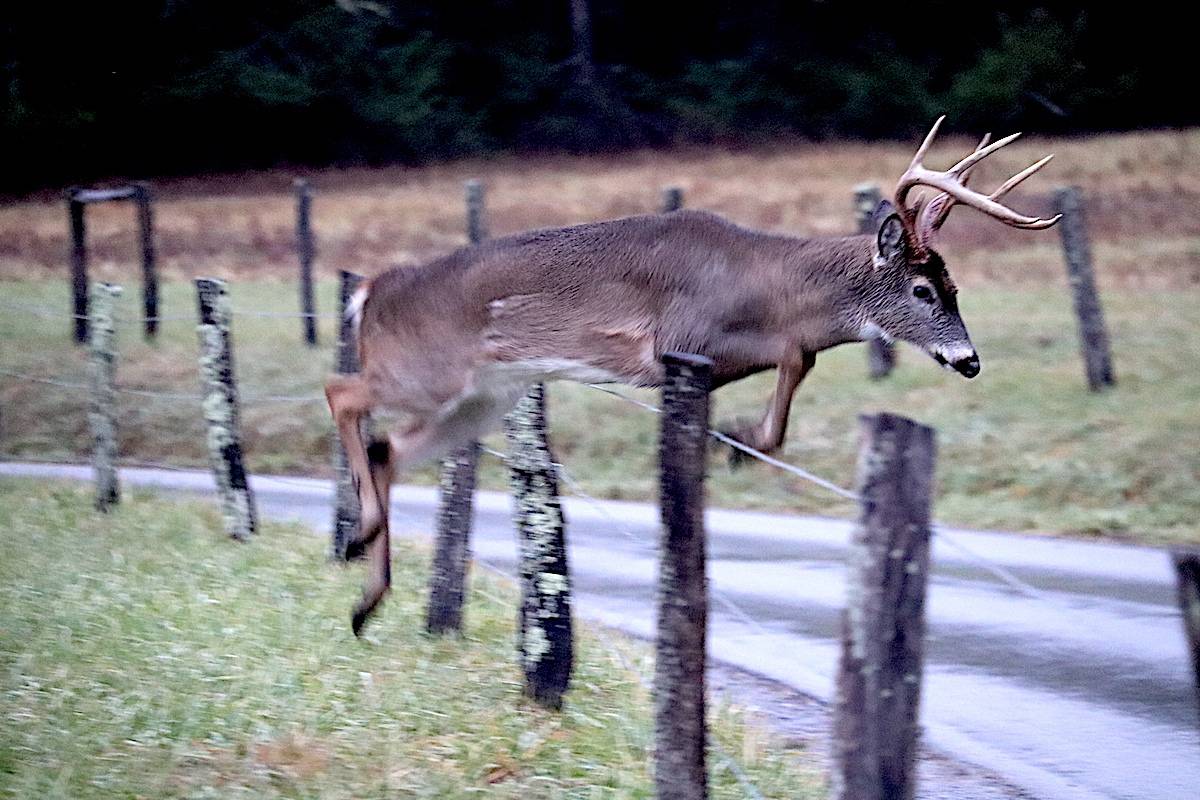Whitetail deer are known for their agility and overall athleticism, allowing them to avoid predators and dodge danger under various conditions.
When stressed or scared, deer can run remarkably, covering ground much faster than most predators.
Deer also tend to leap relatively tall obstacles, such as fences, with minimal effort.
This, in itself, begs an interesting question. Just how high can the average whitetail deer jump?
Contents (Jump to Topic)
ToggleIn truth, the answer to this quandary is quite surprising.
And provides noteworthy information to hunters looking to better understand the way that deer move within a given area.
Read on to learn more about the physical abilities of the whitetail deer.
No Obstacle To Tall
Generally speaking, whitetail deer are quite adept at jumping over or across many obstacles that would restrict the movements of most other mammals.
Some of the most common of these obstacles include fences, natural berms, and elevated creek banks.
read.. will an electric fence keep deer out
This tends to be quite advantageous when attempting to outrun predators.
The average whitetail deer has been known to jump to heights in excess of 7-8 feet, though deer have been recorded clearing taller obstacles on occasion.
Many even claim to have laid witness to deer clearing specialty fences measuring nearly 10 feet in height, when given a long running start.
Under most circumstances, deer are known to jump to their most impressive heights when faced with danger.
read.. Why do deer stomp their feet
Whether it be chasing coyotes or a band of hunters, deer stop at little to avoid confrontation whenever possible.
Even from a standstill, the vertical jump of a whitetail deer is quite impressive, easily approaching a height of 7-plus feet.
Other Whitetail Physical Feats
Aside from their obvious high-jumping abilities, whitetail deer are also capable of performing a number of additional physical feats worth mentioning.
One of the most significant of these physical feats includes a deer’s ability to cover long distances in a single bound.
In fact, whitetail deer have been known to leap as far as 25-30 feet.
Whitetail deer are also known to be incredibly fast sprinters, rapidly putting distance between themselves and any predator.

Deer have been routinely clocked at speeds in excess of 30 MPH, though short-spirited bursts of up to 40 MPH have been recorded.
The combination of these characteristics prove ideal when attempting to avoid danger.
When running at high speeds, clearing large distances in a single bound, and leaping over even the tallest of obstacles.
There is little that can outpace the average whitetail deer.
Perhaps even more impressive is the fact that the average whitetail has the stamina to keep up such evasive actions for quite a lengthy period of time.
What This Means For Hunters
Understanding the information outlined above pays dividends when attempting to discern how the deer of an area use and travel about a given piece of property.
Needless to say, no fence or other vertical obstacle of less than 8 feet in height is going to restrict the typical whitetail’s movements.
However, it is worth mentioning that deer almost always opt to cross beneath a fence, rather than over it, whenever possible.
Deer, much like people, generally seek out the path of less resistance.
Therefore, when attempting to predict deer movements, one should always seek out alternate routes of travel – That does not involve crossing fences with any degree of regularity.
In many cases, deer will walk out of their way to cross through a broken or damaged segment of the fence,.
Rather than being forced to jump over a section of fence that is fully intact.
This can be worth keeping in mind, as deer movement is often funneled toward such locations, making them a prime place to hang a stand.
One technique used by many hunters to influence and funnel the movements of deer in a given area involves wiring the top strands of a fence together.
They do so, in order to produce a noticeable low spot.
Though deer can easily jump most fences at their full height, they tend to gravitate toward crossings at which greater clearance is provided.
However, do not be fooled into thinking that deer will only cross at low-lying points along a fence.
When required to do so, a deer will cross an average fence wherever necessary.
After all, most standard cattle fences are little more than 4-5 feet tall, presenting not even a modest challenge for the ever-athletic whitetail.






